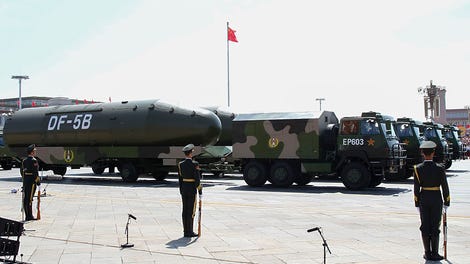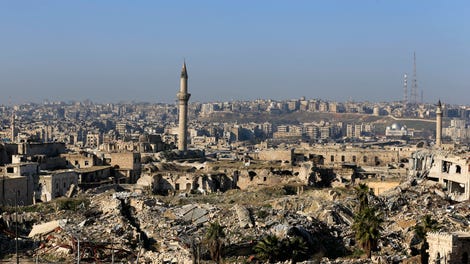
Black sites, renditions, and all those other War on Terror-isms that had supposedly been consigned to an earlier and darker period of America’s counter-terrorism efforts seem to be making a comeback. But they were an absolute horror show the first time around, and here’s why.
Advertisement
The Washington Post obtained what it claims is a draft version of an executive order reauthorizing a review of interrogation guidelines, along with the continued operation of the Guantanamo Bay prison facility and the possible re-introduction of a number of Bush-era policies, including interrogation of terror suspects outside the United States.
During a briefing on January 25, White House Press Secretary Sean Spicer didn’t deny the document’s authenticity, opting for the classically non-denial denial-type formulation that the draft was “not a White House document.” Regardless of where in the executive branch it may have originated, the draft is consistent with President Donald Trump’s repeated endorsement of torture over the course of the campaign—even when it puts him at odds with his own retired general turned Defense Secretary—as well as with his accusations that President Barack Obama had placed “political correctness” above national security in responding to terrorism.
Advertisement
According to this view, “political correctness,” and not concerns over legality or human rights or basic efficacy, explained why the U.S. intelligence community no longer used some of the most controversial tactics of the Bush years. And since Trump likely figures he was elected on promises of vanquishing political correctness from American life, why not bring those tactics back?
2017 Is The New 2002
Among the more alarming of the mid-2000s throwbacks cropping up in the document appears in section 7(a), which says that the Director of National Intelligence and assorted other national security figures will:
Recommend to the president whether to reinstate a program of interrogation of high-value alien terrorists to be operated outside the United States and whether such program should include the use of detention facilities operated by the [CIA].
A review of what that actually means, in case 2005 is a foggy and distant memory for you: On February 7, 2002, then-president George W. Bush signed a secret memorandum affirming the White House’s view that the U.S. wasn’t required to follow the Geneva Conventions in its efforts against al Qaeda.
Sponsored
Once it became covert U.S. policy that the traditional laws of war did not apply to terrorism suspects, the government had a much freer hand in determining the limits of what it was legally allowed to do for national security purposes—but it didn’t have an entirely free hand. Intelligence agencies were still hamstrung by the possibility of their activities being exposed to both terrorists and the broader public. And if the Geneva Conventions now meant very little within a U.S. counter-terror context, intelligence agencies were still subject to domestic civilian legal jurisdiction for anything they did inside the America’s borders.
Application Of Black Sites
One solution was to secretly imprison and interrogate suspects outside our borders instead. During Bush’s presidency, the U.S. sent 119 suspects to secret CIA detention centers throughout the world, and involved some 54 countries in a covert interrogation program. Some of these facilities were located in friendly nations: In 2011, the AP located the nondescript building in downtown Bucharest, Romania where several high-profile suspects had been detained, including 9/11 mastermind Khalid Sheikh Mohammed.
Advertisement
Advertisement
In other cases, the American detainee program made for some odd bedfellows: the U.S. sent terrorism suspects to Syria at around the same time the Assad regime was accused of aiding insurgents who were fighting the U.S. military in Iraq. Both Syria and Romania were, of course, outside the reach of U.S. law, and the program operated beyond the knowledge of nearly everyone in the U.S. government. The black sites were only publicly exposed as the result of dogged, Pulitzer Prize-winning reporting from the Washington Post’s Dana Priest in 2005.
The advantages, such as they were, of the black site program can be glimpsed in this clip from the credits of “Four Lions,” Christopher Morris’s far-sighted terrorism comedy from 2010:
Black sites operated under layers of operational opacity, and were a convenient way around problems of legal jurisdiction and rule of law—the U.S. and its allies couldn’t quite morph a shipping container into sovereign Egyptian territory, but they could temporarily disappear a terror suspect into places domestic law or oversight couldn’t easily penetrate.
One can debate the necessity of such arrangements: the black sites provided secrecy and deniability for some of the more sensitive activities in the U.S. government, and were a key part of an interrogation program that at least overlapped with a period free from terror attacks on U.S. soil.
Why It Didn’t Work
But there was a high downside. At its worst, the black site program was both morally appalling and disastrous for U.S. foreign policy. It created tensions between the U.S. and some of its closest allies, exposed CIA employees to foreign prosecution, and enabled some of the worst excesses of the Bush-era “war on terror.”
Advertisement
Advertisement
If the interrogation program comes back, here’s the sort of thing that the U.S. government’s lawyers and diplomats may have to look forward to. In 2003, CIA and Italian intelligence agents abducted an Egyptian cleric named Hassan Mustafa Osama Nasser in Milan, and then sent him to Egypt, where he was allegedly tortured and held without trial for four years. Nasser was eventually convicted in absentia in Italy for aiding an international terror group.
But more importantly, Italian courts investigated Nasser’s arrest, and eventually convicted 23 CIA staffers in absentia for their role in seizing him, a Syrian-born Canadian citizen who was detained at JFK airport in New York on his way back to Canada from a family vacation in Tunisia in September of 2002. The US eventually sent him to Syria, where he was imprisoned and tortured for a year. Arar had no connections to terrorism, and his case understandably became a sticking point in US-Canadian relations.
The detainee program had problems beyond the Italies and Canadas of the world. It gave a number of somewhat less friendly regimes potential blackmail leverage over the U.S., and put the U.S. in league with some notoriously brutal and widely loathed foreign intelligence agencies. In Egypt, the intelligence services of Hosni Mubarak wanted to assist the detainee program in order to facilitate intelligence sharing and gain access to al Qaeda suspects—Mubarak was overthrown after a popular uprising in early 2011. As for Syria, the regime of Bashar al-Assad was aiding anti-US militants in Iraq at the same time it cooperated with the CIA’s foreign interrogation program.
Advertisement
Six years into Syria’s civil war, the Assad regime is now among the most isolated and despised governments on earth—but for a time, Assad’s Baathist paradise was “one of the most common destinations for rendered suspects.” The black sites were also kept secret partly in order to enable the sort of detainee treatment described in the Senate’s 2014 report on the CIA’s interrogation program, which outlined the agency’s torture and abuse of terror suspects, as well as its attempts to conceal those activities. President Obama quickly decided that the political and moral costs of the U.S. detainee policies just weren’t worth the possible security payoff—assuming there even was one to begin with. He ended the detainee and interrogation programs by executive order on the second day of his presidency, in 2009.
What Now?
So why bring it all back? Why follow a policy that could easily lead to fights with U.S. allies, invite unseemly cooperation with semi- and overtly-hostile regimes, and undermine the U.S.’s moral standing? There will always be people who argue the efficacy of Bush-era counter-terrorism policies, but Trump’s explanation is probably far less empirical than anything they’d give. “From this moment on,” Trump said in his inauguration address, “it’s going to be America first.”
If that’s your only moral rubric, even policies explicitly designed to break free from the niceties of U.S. law could start to look like a no-brainer.
Advertisement
Advertisement
Armin Rosen is a New York-based writer and editor who has reported from throughout Africa and the Middle East.
















